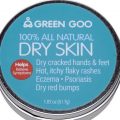 Choosing a sunscreen that is truly safe has become an increasingly confusing endeavor. And now, a new study shows that the type of sunscreen often touted as the safest may raise the risk of melanoma!
Choosing a sunscreen that is truly safe has become an increasingly confusing endeavor. And now, a new study shows that the type of sunscreen often touted as the safest may raise the risk of melanoma!
Zinc oxide=free radicals=DNA damage=melanoma?
According to this study, zinc oxide–an ingredient commonly used in natural sunscreens–undergoes a chemical reaction when exposed to ultraviolet light that may release free radicals. Free radicals can damage DNA, thus increasing the risk of skin cancer.
It is important to note that this new research only looked at nanoparticles of zinc oxide. Hopefully, the same free radical formation doesn’t occur with micronized or larger particles. (Read on for more about nano and micronized particles.)
Chemical Sunscreen Versus Mineral Sunblock
You can read about my feelings on sun safety (and vitamin D deficiencies) in our review of natural sunscreens, but I’ll try to give you a not-too-confusing rundown of sunscreen/sunblock safety here:
- There are two types of sun protection lotions–chemical (sunscreens) and physical (sunblocks).
- Chemical sunscreens penetrate the skin and absorb the sun’s rays.
- The most common active ingredient in chemical sunscreens is carcinogenic, hormone-disrupting oxybenzone, which–when exposed to sunlight–is associated with the production of free radicals (ironically, free radicals are what lead to wrinkles and premature aging).
- Physical sunblocks, on the other hand, contain minerals (usually zinc oxide or titanium dioxide) that form a barrier on top of the skin that blocks or deflects the sun. Most sunscreens advertised as “natural” do not contain oxybenzone and instead are mineral-based, although there are some exceptions.
- Because mineral sunscreens leave a white sheen on the skin, manufacturers usually use nanoparticles of zinc oxide or titanium dioxide in their formulas, and these microscopic molecules are suspected to contribute to the formation of free radicals. The newest study, mentioned above, looked at nanoparticles of zinc oxide.
- In response to the bad press about nanoparticles, many natural sunscreen manufacturers now use micronized particles of zinc oxide or titanium dioxide. These are slightly larger than nanoparticles, and may or may not carry with them similar health concerns; there is a lack of research on their safety.
So what’s a concerned parent/human to do?
My recommendation is to skip the sunscreen, and let your kid enjoy a few minutes of vitamin D exposure each morning or afternoon. Get inside during the hottest hours of the day. Use hats and umbrellas if you can. When you’re at the beach or otherwise unable to avoid heavy sun exposure, stick to a non-nano zinc oxide or titanium dioxide sunblock (I might favor the titanium dioxide formulas for the time being). And remember: the whiter the sunscreen goes on, the better!
Read Gimme the Good Stuff’s Sunscreen Safety Review for your safest bets.
Stay sane,
If you liked this post, sign up for our newsletter to be alerted when we publish new content like this!






Share this:
Share the post "Natural Mineral-Based Sunblocks Linked to Melanoma"